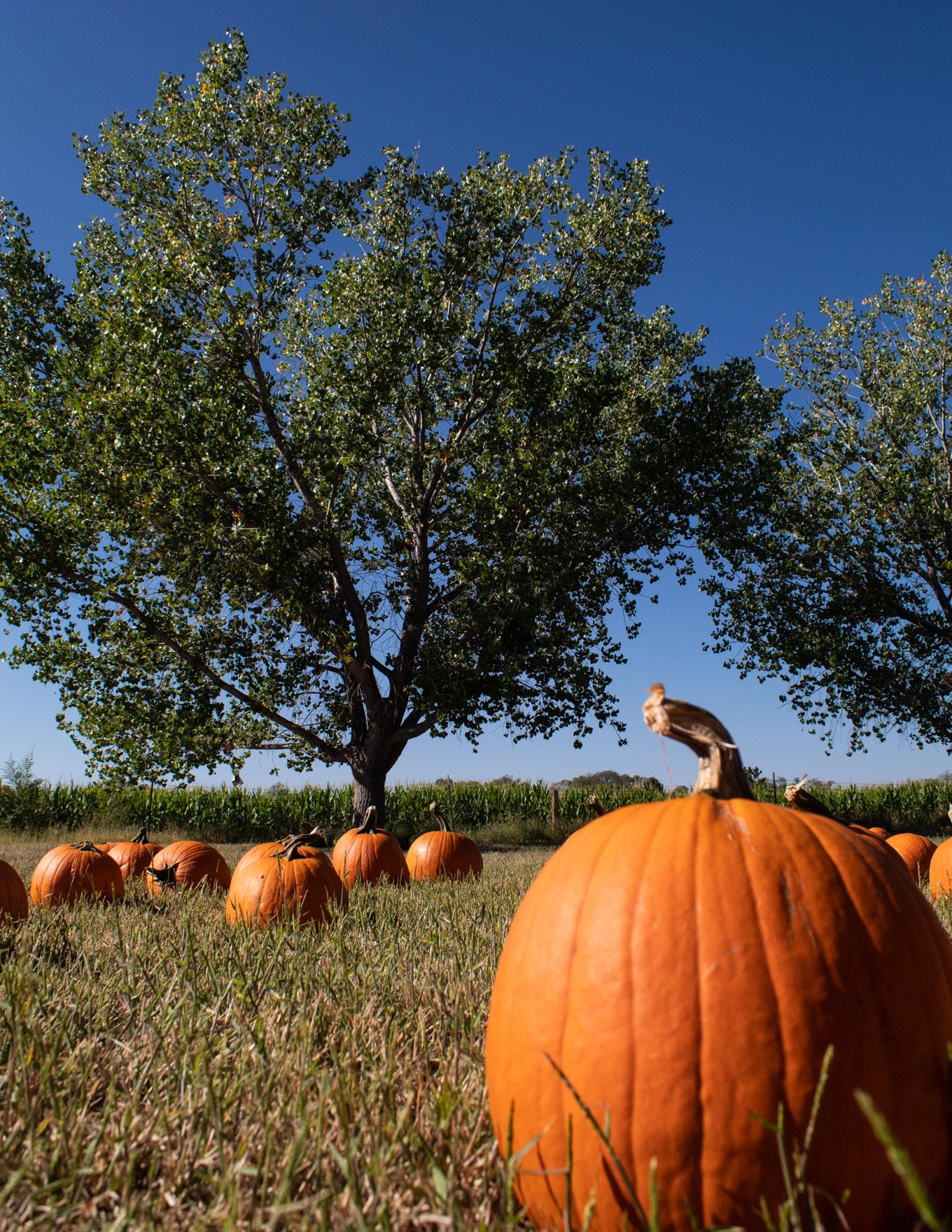




Our Annual Meeting will soon be upon us. This is your chance to use your grassroots authority to help shape the future of New Mexico Farm and Livestock Bureau. The process begins at the county level with policy development. After that, as a voting delegate, you can assist in creating and passing policy that helps guide our organization. Our policy book, which is essentially created by you, is the platform on which we stand. When we add, delete or change policy, we build the future of this organization by giving it a direction that will benefit the farmers and ranchers of New Mexico. It is difficult for us to take a stand on cer
Ogden cont. on page 10

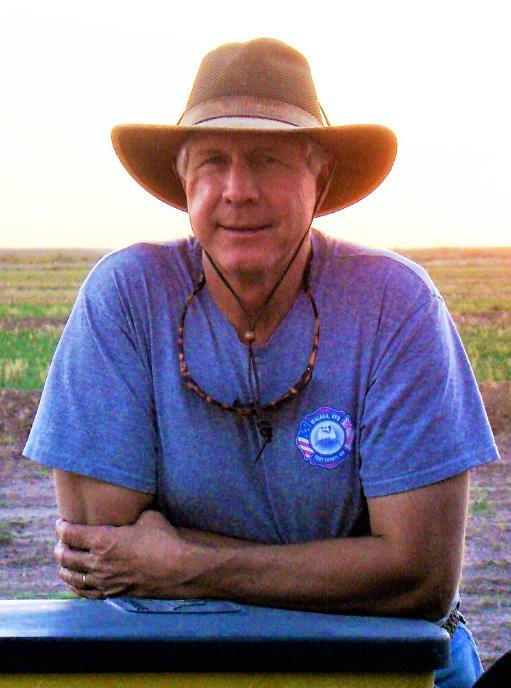
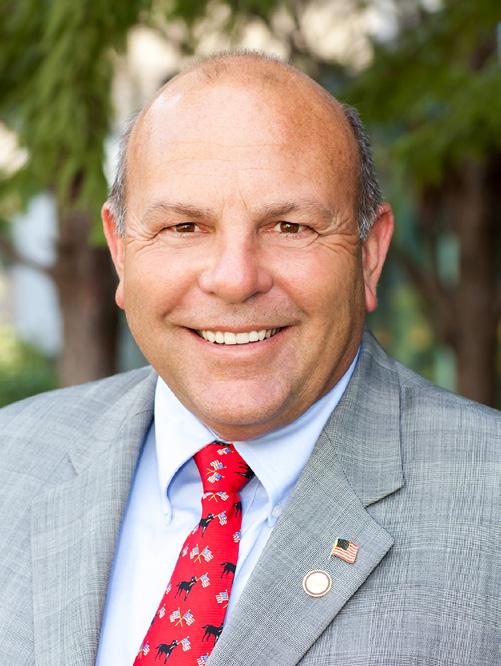
Mother Nature can be a tough business partner. Storms can come in an instant, undoing months—or even years—of hard work and planning. But it’s not just the sudden, sweeping natural disasters that are devastating. Sometimes Mother Nature is slow and unforgiving. This is something our friends out West know all too well as they face another year of intense drought—a drought that is dragging on and edging eastward.
Duvall cont. on page 11
I’m excited to be part of the New Mexico Farm and Livestock Bureau. In my career at Farm Bureau, every time a new employee would start, I’d tell them the first year is like a fire hy drant and you just need to not drown in the information that will come at you. Just focus on what you were hired to do, ask a ton of questions and then ask more. As you enter the second year, you know what’s coming and you can now start to focus on your strengths and how you can improve. By the third year, you have experience under your belt and the tools you need
Foster cont. on page 10
Wagner’s Farmland Experience in Corrales is one example of the many agritourism experiences featured in an article on page 4.
On the cover: Picking your own





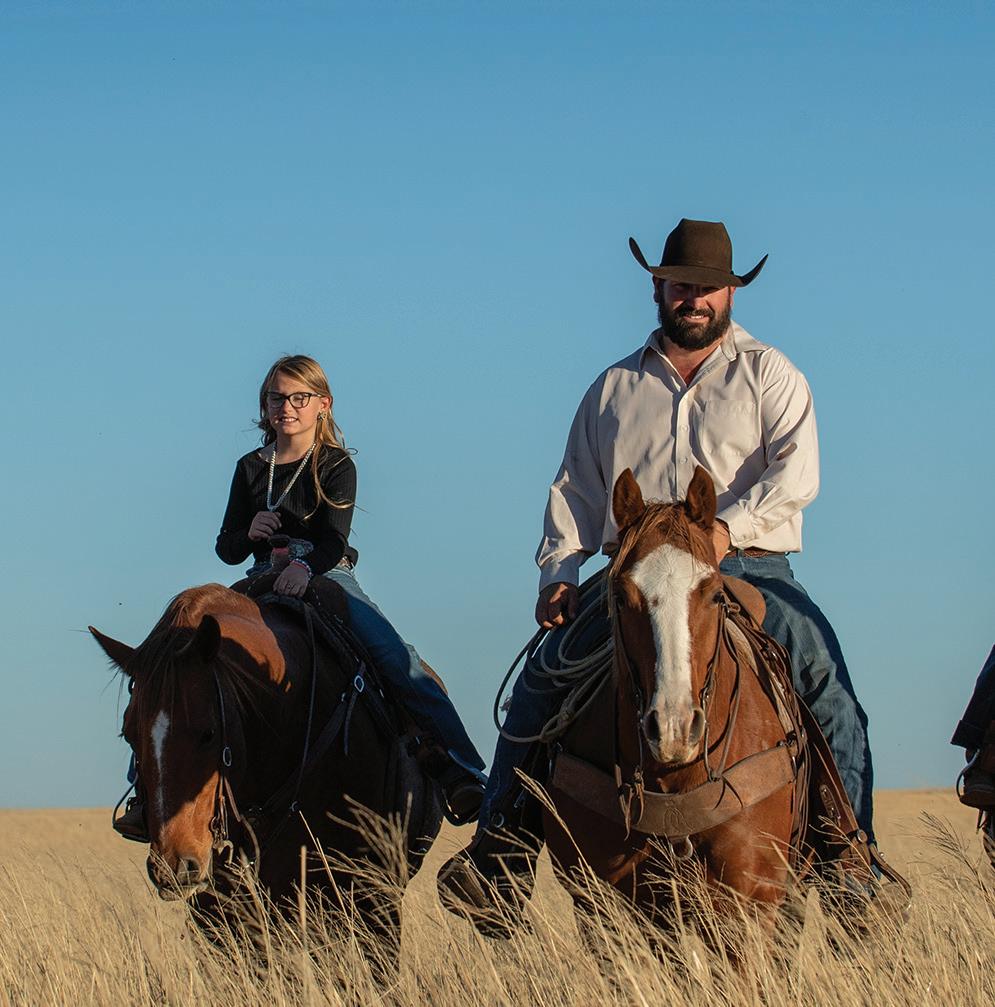




 By Katelin Spradley, Director of Communications
By Katelin Spradley, Director of Communications
Brisk air, changing leaves, and, for those in agriculture, abundant harvests mark the passage of summer and the entrance of fall. While the simple pleasures of a fall day spent outside on the farm and ranch may be commonplace for those involved in agriculture, it’s become a sought-after experience for those not directly involved in working the land. Farmers across the state are looking to provide that experience and connection for New Mexicans.
Anna Lyles is one such farmer. Lyles and her husband grow chile, lettuce, onions, pecans, and alfalfa on their farm in Las Cruces. In 1998, a neighbor invited them to contribute to the celebration of the 150th anniversary of Las Cruces after their chile field was plagued with Phytophthora, a fungal disease that causes the plant to wilt and the roots to rot. They plowed the diseased plants under and turned their once “pristine field” into a corn maze. The success of that corn maze served as the fertile soil upon which they built the Mesilla Valley Maze.
“This was one of those things that just came together,” said Lyles.
In addition to a corn maze, which this year features a honeycomb design and pollinators to go along with their 2022 theme “Birds, Bees, and Butterflies,” Mesilla Valley Maze offers hayrides, a pumpkin patch, flower field, games, and a small store. They offer school field trips during the latter part of the week and are open for 12 days on the weekends for general admission.
“We do a lot with ag education,” said Lyles. “That was really our cornerstone when we started.”
Lyles said they deal with 17 school districts in two states and two countries through their school field trip program. The Pre-K through 5th grade students who visit go on a hayride, pick a pumpkin, and visit the outdoor classroom where an educator provides a tailored lesson based on curriculum that meets school standards and benchmarks. Mesilla Valley Maze hosts between 18,000 to 25,000 elementary students and about the same number of visitors from the public each season.
After 24 years, Lyles said they are still expanding their business. In the spring, she offers the location as a venue for wed dings, graduation parties, and other events. Despite the modernization of the facilities and increasing popularity of Mesilla Valley Maze, Lyles stands by the value provided to families simply by spending time together.
Cont. on pg. 8
Rain has occasionally prevented Mesilla Valley Maze from opening, said Lyles.

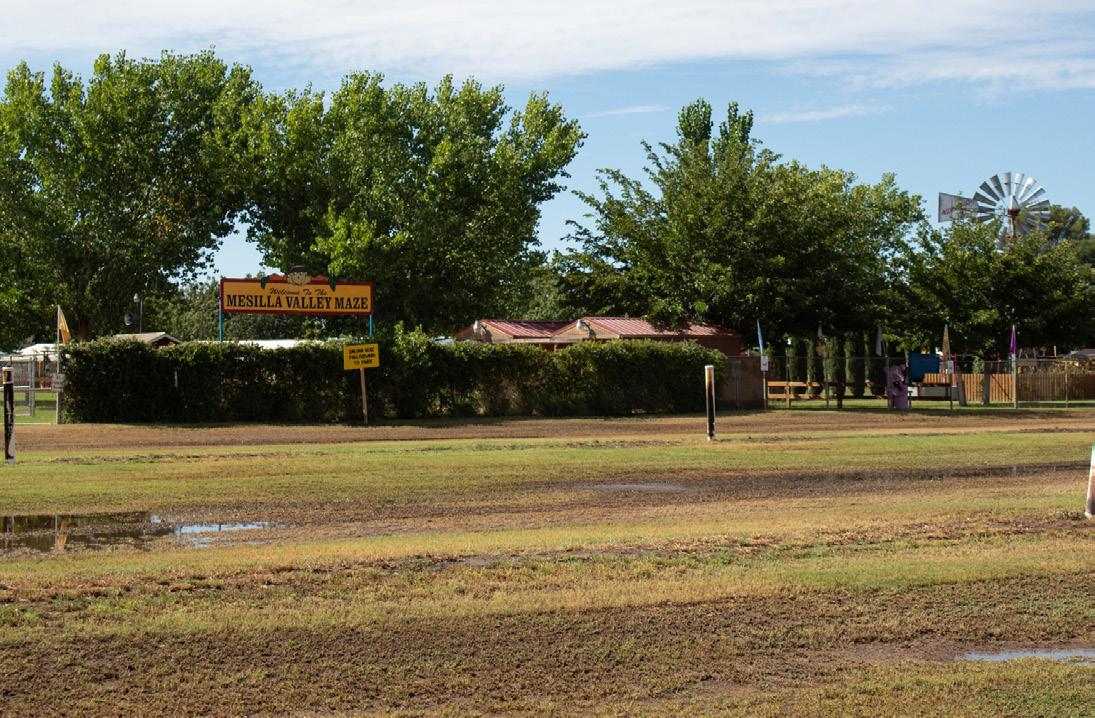
We can help protect your grazing or haying acres against a lack of rainfall with Pasture, Rangeland and Forage (PRF) coverage, and protect your livestock herd from the risk of declining markets with Livestock Risk Protection (LRP).
Contact your Farm Bureau agent to learn more about these programs and to discuss options before the December 1 PRF sign-up deadline.
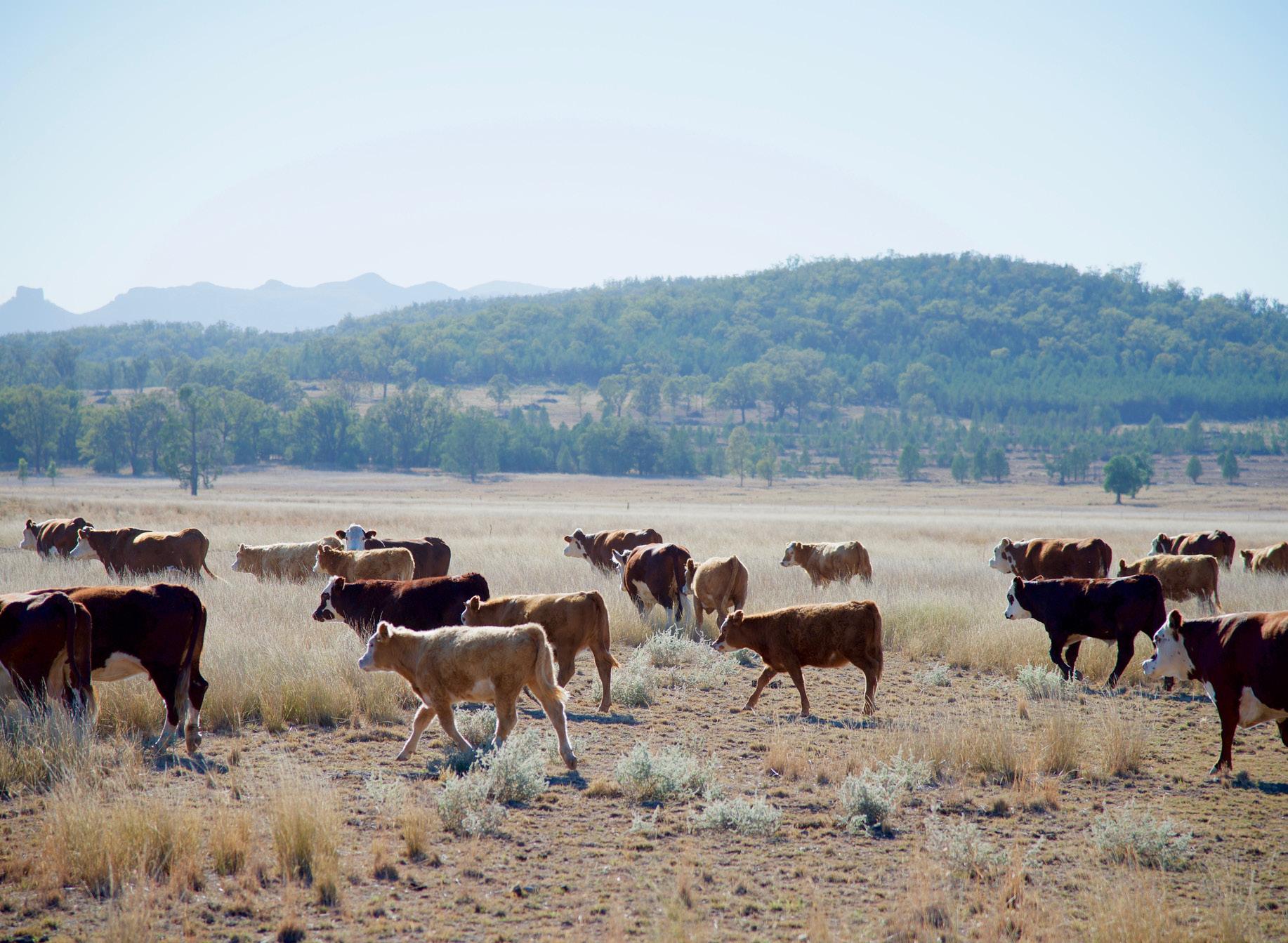
The U.S. Environmental Protection Agency (EPA) in late August of this year announced a proposed rule to designate two manufactured chemicals widely found in the environment as “hazardous substances” under the Comprehensive Environ mental Response, Compensation, and Liability Act (CERCLA).
Per- and Polyfluoroalkyl Substances (PFAS) are a group of manufactured chemicals that are used in everything from stain-resistant clothing to furniture to cookware and food packaging. PFAS are known as “forever chemicals” because they do not easily break down over time and can accumulate in the environment. Because they do not break down easily, PFAS chemicals have been detected in water, air, and soil at locations around the globe.
There are thousands of different chemicals that fall into the PFAS family but the two most used and studied are Perflu orooctanoic Acid (PFOA) and Perfluorooctane Sulfonate (PFOS), according to the EPA. Both PFOA and PFOS have been voluntarily phased out by U.S. manufacturers but are still in limited use. According to the EPA, current peer-reviewed sci entific studies have shown exposure to certain levels of PFAS can be associated with cancer diagnoses, infant development disorders, and endocrine and cholesterol disorders.
The EPA is proposing to list PFOA and PFOS as hazardous substances under CERCLA. CERCLA is commonly known as the “Superfund” because it provides a federal fund to use for the cleanup of hazardous waste sites as well as accidents, spills, and other emergency releases to the environment. If finalized, the proposed rule would trigger reporting require ments for releases of PFOA and PFOS into the environment and give the agency the ability to require cleanup and recover associated costs, said the EPA.
Unfortunately, New Mexico agriculture has already seen the devastation PFAS contamination can have on the liveli hood of farmers and ranchers. In 2018, fourth-generation dairy producer and owner of Highland Dairy, Art Schaap, was informed by representatives of neighboring Canon Airforce Base that his water was contaminated with high levels of PFAS chemicals. PFAS present in the fire extinguishing foam used by Canon Airforce Base and outlying landfills in the same area where the firefighting drills were performed are the source of pollution, said Schaap. As a result, his 3,500 acres of land and 5,200 head of dairy cattle were exposed to the pollution, said Schaap.
“We started seeing a decrease in production and breeding performance, so we thought it was feed problems,” said Schaap. “We were looking for problems, but we never thought of checking the water.”
After the discovery of the contamination, neither the milk nor the meat from his animals was sellable and all 5,200 head of dairy cows either died of natural causes on the farm or were euthanized, said Schaap. The animal carcasses must be com posted on site and will eventually be incinerated to mitigate the contamination, said Schaap.
“PFAS is like plastic,” said Schaap. “It just doesn’t go away.”
The New Mexico Environment Department, New Mexico Department of Agriculture, state attorney general, and New Mexico’s congressional delegation have been instrumental in addressing the pollution and pressuring the U.S. Department of Defense (DOD) to be part of the solution, said Schaap. No assistance, however, has come from the source of the PFAS contamination. The two most recent National Defense Authorization Acts passed by Congress included money for the DOD to purchase contaminated land, said Schaap.
“I believe the individual states should clean up the mess and send the bill to the DOD,” said Schaap. “That way we take care of ourselves.”
Sadly, like Schaap, farmers and ranchers in other parts of the country are facing the crude reality of PFAS contamina tion. The U.S. Food and Drug Administration, along with state and local officials, work to ensure food contaminated with unacceptable levels of PFAS does not enter the food supply. While farmers and ranchers do not manufacture PFAS and would never knowingly spread PFAS on their land, agricultural groups are concerned farmers may be held liable for PFAS contamination on their land or lose their property values under the EPA’s proposed rule.
“The advice from me for agriculture, farmers, ranchers, and dairymen is to get your water checked,” said Schaap. Although it is uncertain at this time about the type of impact the rulemaking will have on agriculture, AFBF and NMF&LB staff are thoroughly evaluating the proposed rule to submit comments and mobilize our grassroots membership by the November 7 deadline.
Whether it’s agricultural products, or other sustainable materials, Ford is changing the way the world moves for the better.

We first used soybean-based foam in seat cushions, back and head rests over 10 years ago. Today, over 29.5 million vehicles and 922 billion soybeans later, every Ford vehicle built in North America contains soybean based foam. It’s just one example how Ford is leading the way when it comes to sustainability.

Visit FordFarmBureauAdvantage.com for current Farm Bureau Member offers.
 FORD RANGER
FORD MAVERICK
FORD F-150®
FORD SUPER DUTY®
FORD RANGER
FORD MAVERICK
FORD F-150®
FORD SUPER DUTY®
“You’re on your phone all day. Why do you need to be on one here?” said Lyles. “...Here we try not to do anything that will pull your focus away from the time you’re spending with your family.”
A similar sentiment is shared by Stuart and Allyson Joy, the family behind Heirloom Acres in Artesia, NM.
“We were really hoping people would be encouraged out here and connect to ag but mostly connect to each other,” said Allyson Joy. “They have the opportunity to unplug and unwind and do something side by side with family.”
In addition to the 10-acre corn maze and various activities ranging from a giant jumping pillow to rentable campfires, Heirloom Acres boasts New Mexico True certified pumpkins you can pick off the vine in their pumpkin patch. Stuart’s family has been farming in the area for more than 100 years and today grow alfalfa and cotton.
“Both sides of the family have been a tremendous help getting this dream off the ground,” said Allyson. “Our first year I remember telling our family what we wanted to do, and they all thought, ‘That’s neat,’ but they all jumped in feet first and helped build a lot of things out here.”
Heirloom Acres is the realized dream of Stuart who Allyson lovingly refers to as an “engineer by day and farmer by night.” Allyson stays home with their three children Annabelle (6), Sutton (5), and Madilyn (3), and helps with the business and marketing side of the farm. Heirloom Acres was a way to diversify the farm but also fulfill Stuart’s passion for connect ing people to agriculture, said Allyson.
“If you don’t grow up in this, there’s not a lot of opportunities to connect to it,” said Allyson. “He wanted to provide a place where people could have fun but also be educated about what happens on a farm.”
Heirloom Acres provides field trip opportunities to schools in the surrounding areas. Educators and retired teachers help facilitate the students exploring six stations that provide lessons and activities related to corn, pumpkins, animals, physical education, and water, said Allyson.
Embarking on their fourth season in agritourism, Allyson said they have certainly felt the support of the community.
“The community has been a vital part of this,” said Allyson. “Just the support of people coming out or businesses that run ads out here has been a humbling thing but we are so grateful.”
More than just weekend attractions, agritourism businesses are part of their local communities, agreed Jimmy and Rox anne Wagner, owners of Wagner’s Farmland Experience in Corrales. Community members jumped to voice support for the business when neighbors complained about the noise and traffic impediments, said Roxanne.
“That is also a big challenge; the zoning,” said Roxanne. “We’re A1, not a commercial zone, so we are in a gray area for what we do. It is sort of commercial, but it is agriculture.”
Jimmy and Roxanne Wagner started Wagner’s Farmland Experience in 2005 to diversify their farm income. The Wag ners primarily grow fruits and vegetables, which they sell at their farm market down the road, and alfalfa. The family has been farming in the area for 112 years.
“Farming is tough, and this is kind of an added benefit,” said Jimmy.
Wagner’s Farmland Experience includes a six-acre corn maze, pumpkin patch, hayrides, farm animal exhibit, and the more recent addition of a u-pick sunflower field. This year’s corn maze theme is dinosaurs and features a Pterodactyl, T-Rex, and Triceratops. The theme was picked by their son, one of their four children, who says the business was his child hood, said Roxanne.
“When we first started this, he [the son] was not even in school yet so he would just be in there with all the kids that would come on a field trip,” said Roxanne. “He would get lost in the group.”
Before the pandemic, between 8,000 to 10,000 students from areas as far away as Grants would come to Wagner’s Farmland Experience and learn about everything included in growing their food including the seeds, water, bees, soil, and animals, said Jim my and Roxanne.
“The last two years we didn’t get any field trips because of the pandemic,” said Jimmy.
“But bookings are picking back up,” assured Roxanne.
Although the loss of field trips during the pandemic was a challenge, the unique characteristics of their business provided some opportunities as well.Pirates, aliens, and a tropical adventure have all been prior themes of the corn maze at Wagner’s Farmland Experience.
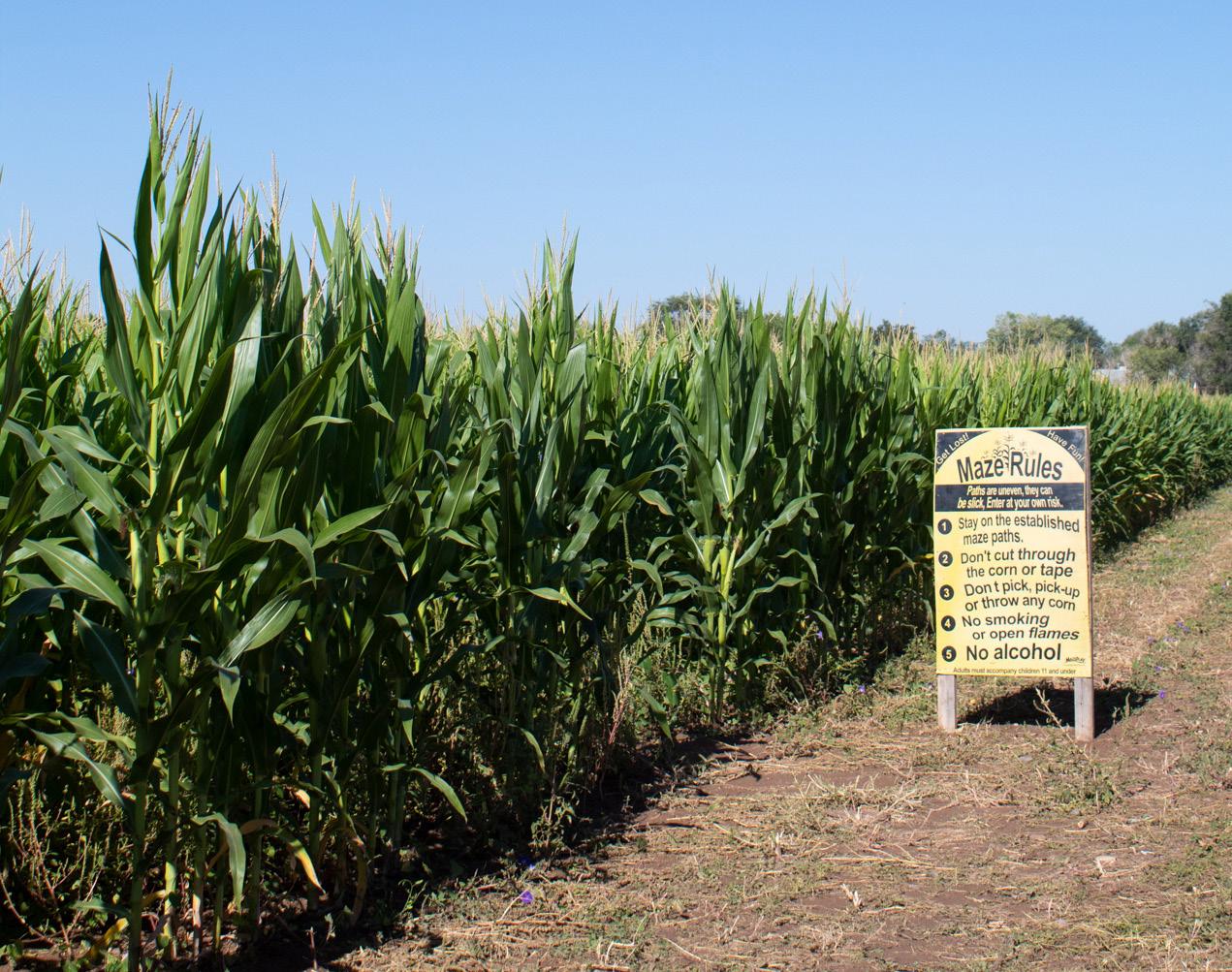
general public,”
Roxanne.
happy just to
Other challenges inherent to agriculture afflict agritourism as well. Jimmy and Roxanne Wagner said finding help, both on their commercial farm and for their agritourism business, has been difficult. Lyles and Allyson mentioned the unpre dictable weather, saying rain had prevented them from opening some days.

“We can do a lot and we can work hard but ultimately we don’t get to control if the pumpkins grow, or if the corn comes up, or if it falls over in a windstorm, or if it rains,” said Allyson.
Like traditional farming, agritourism has intrinsic rewards. Allyson said Heirloom Acres has been a way to “marry” her background as a dietitian and strength and conditioning specialist and her husband’s love for agriculture. Lyles said seeing the same teachers bring their classrooms each year because they see it as a valuable experience is a “vindication for us that we are doing the right thing.” For Jimmy and Roxanne Wagner, it’s the people.
“Your customers come happy so you’re dealing with a happy crowd,” said Roxanne Wagner. “It’s nice to have people enjoy what you’re doing.”
There’s a need for more places like this within New Mexico, said Lyles.
“I think it’s an opportunity for the next generation,” said Lyles. “This is a way to generate income, share the farm or rural experience with people from the towns or cities, and it is also not buying 1,000 acres and $250,000 tractors. The input of money you can do a little over time.”

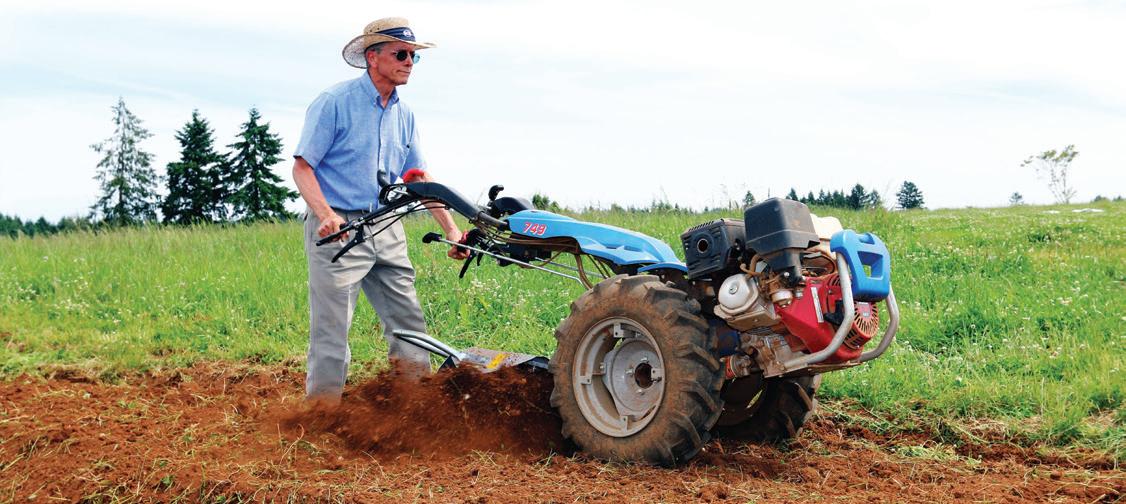

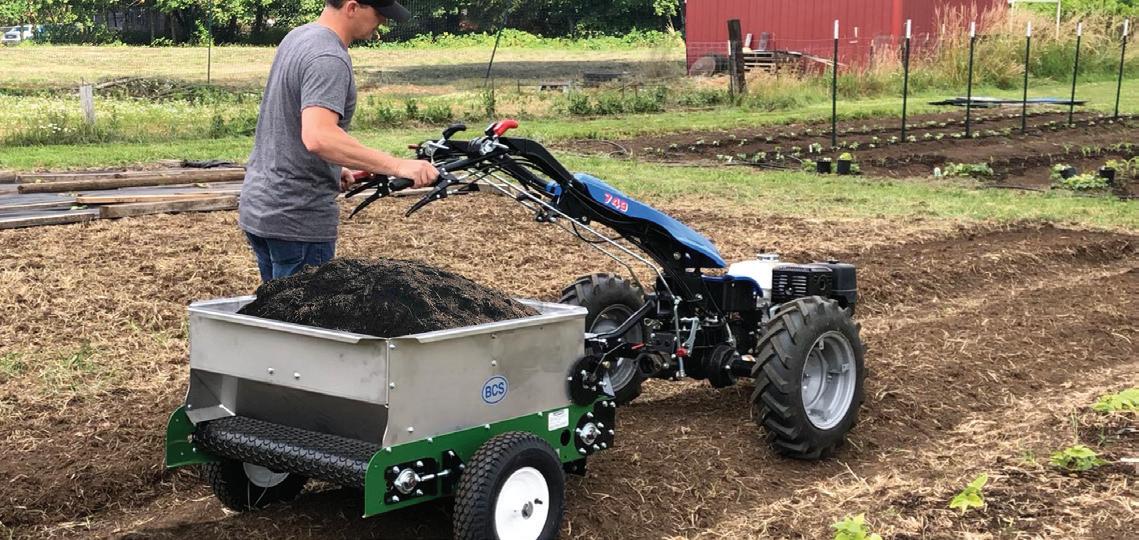
Agritourism is full of opportunities, both for those looking to enter or continue in agriculture and those looking to con nect to the people and places that put food on their table.
“I think it helps people connect and appreciate agriculture because even if you didn’t grow up on a farm and you don’t really understand the whole process, you can still appreciate the products and outcomes,” said Allyson.
Foster from page 2 to do a great job. For the first time in 22 years, I’m again drinking from a fire hydrant and although I have the fundamentals of the organization, it’s all new to me once again but I’m jumping into the deep end of the pool gladly.
I grew up on a cow-calf operation in Post, Oregon. We raised alfalfa, grass hay and dry land rye along with Hereford cattle and sheep. We stopped raising sheep after I left for college. My best childhood memories are gathering cattle off the mountain, branding, and riding around either in the tractor with my dad or putting out salt blocks on our summer range. I didn’t realize it was work until I was older and had to build fence and stack hay. Farm and ranch kids are a special group of kids in my book because they understand the legacy of their home and those that farmed and ranched before them. I feel the same way about Farm Bureau and its volunteers and staff.
My leadership career began in 4-H and continued in FFA. In FFA, I worked with the local county Farm Bureau to raise funds for leadership conferences and conventions. Those years began the foundation for what my career has been built upon. In college, I was involved in student government and was the vice president of the community college student board. After Linn-Benton, I transferred to Oregon State and continued my leadership development with Steer a Year, a stu dent-run feedlot as well as an internship with Oregon Beef Council and Oregon Cattlemen’s Association.
My career at Arizona Farm Bureau (AZFB) began as the Government Relations Department admin. Within a year, AZFB created their Government Relations Program Manager position for me to continue developing their programs of safety and workman’s compensation program, policy development, transportation, air quality and other regulatory issues. After a couple years, I realized lobbying isn’t my strength - developing leaders and programs were. I moved into one of the field positions and managed eight counties that encompassed the Eastern half and Southern half of the state. I continued with the safety program and then added state annual meeting planning to my plate. I developed board training and governance programs and became a subject matter expert for AFBF in both safety and leadership development. After eight years, I left that position and became the Executive Director for Maricopa County Farm Bureau in the Phoenix metro area. There I was engaged in air quality, water and other critical issues as well as overseeing the day-to-day operations and programs for the county. After seven years, I was encouraged by Stefanie Smallhouse, AZFB President, to apply to be your CEO here in New Mexico. Stefanie knew my history and skillset were a great fit for New Mexico. We spent many hours together over the years building first Pima County Farm Bureau and then being advisors to each other as we worked our way through different positions at AZFB.
I’ve always been impressed with the NMFLB staff I have worked with and met over the years at various conferences. In just the couple weeks I’ve been on board, I’m even more impressed with what our staff accomplishes and look forward to seeing what continues to be done in the various programs we offer. In my short time with NMFLB, I have also been im pressed by volunteer leaders’ dedication to the organization as well as their love for New Mexico’s ag industry.
My goal for the next couple of months is to meet state and county leaders as well as learn as much as possible about the programs, events, and issues that make New Mexico unique. This organization has spent many hours developing a strategic plan and goals to accomplish the mission. I am looking forward to bringing my knowledge and experience to the table and helping accomplish those goals.
Ogden from page 2 tain issues, especially in Santa Fe, if we don’t have policy concerning those issues or potential legislation. Thus, I urge you to take this right seriously as we approach our November Annual Meeting.
Last year our theme for the Annual Meeting was “Back in the Saddle Again.” I will be dismounting from this ride in a few months. I must admit there have been a few stumbles, and I may have gotten close to being thrown off a few times, but the journey has been a productive one. Two major accomplishments were completing our peer reviews and revising our Mission Statement. Some people despise committees, but during my tenure, we formed a committee that selects the recipients of our scholarships. Also, we formed an Annual Meeting Committee that assists in planning and finding speak ers for our Annual Meeting. In the past, the staff did all of these activities themselves, so I feel it is a more membership/ director-driven organization than in the past. Issue Advisory Committees were formed, which still need some fine-tuning, but they will continue to be an asset to the organization. Many of these changes were not just mine but a collaboration with Chad Smith, our past CEO, and I greatly appreciated all his efforts. Despite a few personal challenges and the obstacles COVID presented, we are still moving forward. We have a superlative staff which made my job so much easier and produc tive. I cannot begin to express my appreciation to each one for their expertise and patience with me, especially these last
few months while seeking a new CEO. They worked diligently to not only keep the wheels on the bus but to keep moving in the right direction.
Elizabeth Foster, our new CEO, has hit the ground running. I have great faith in her that she will continue to improve on what we have started. Please take a few minutes during the annual meeting to introduce yourself and extend a warm welcome to our Farm Bureau family.
I thank you for the support you have given me these past six years and hope that you are proud of the service that I have given to this organization. My only regret is not having the time that the position requires. Keeping my operation going, especially with the labor shortage, making meetings, and constant phone calls, most of which I took while on the tractor, was a bit challenging. You can only burn the candle at both ends for so long! But know this, I don’t plan on riding off into the sunset. I believe in the importance of Farm Bureau and the impact it has, not only on a state level, but nationally. As agriculture continues to have challenges both politically and production-wise, it is imperative that we all keep active, for it will take each and every one of us to have a united front in the years to come.
Do justly, love mercy, walk humbly.
Nearly 70% of the U.S. is facing abnormally dry conditions, or worse, according to the latest reports. For some areas, folks are praying for summer rain, while others will do their best to hold on in hopes of more snowfall this winter. But a heartbreaking number are facing tough decisions already, from selling off herds to plowing under withered crops. The American Farm Bureau recently surveyed members from 15 states across the West, Southwest, Northern Plains and Mid west to assess on-the-ground impact. It’s clear from the responses that many farmers and ranchers are struggling to hang on as water sources continue to deplete.
Less water means less agricultural production from a region that produces a sizable share of our food supply. Through careful stewardship and hard work, farmers and ranchers across areas facing persistent, severe drought produce more than 80% of fruits, nuts and vegetables, more than 80% of wheat, more than 50% of dairy, and more than 70% of beef for our nation. The impact of the drought could place added strains on the supply chain and overall economy as American jobs and food security depend on this region.
According to our survey, most farmers in the regions impacted expect water allocations to be cut in half, which means crops and livestock production will be down significantly as well. Farmers and ranchers are making cuts on top of cuts from last year. Among ranchers who already reduced their herds in 2021, half will be selling off more this year to get by. Crops are down too, with 37% of farmers surveyed saying they had to plow under crops because of a lack of water—that’s up from 24% of farmers last year. Orchards are also being pulled up, with 33% of farmers reporting the destruction of per manent crops, like fruit and nut trees, as prevalent in their area due to lack of water.
It’s a bleak picture in the heat of a very dry summer, but farmers are not without hope. I met with Farm Bureau leaders across the West just last week and heard stories of the challenges and tough decisions Western farmers and ranchers are facing. There is no doubt that folks are hurting, but they also are committed to hanging on as long as they can. And I have seen the innovation and grit of farmers and ranchers out West firsthand as I’ve toured watermelon fields in Arizona, pro duce farms in California and orchards in Oregon and Washington. Like farmers and ranchers across the country, they put their heart and soul into feeding their communities, nation and world.
Agriculture is often the first to be questioned about water use, especially when water is scarce, but farmers are acutely aware of how precious this resource is. We are careful to use every drop. Innovation and advanced irrigation systems have helped agriculture reduce water use (by up to 40%). But even the latest technology cannot eliminate the basic need for water to grow food.
So, what’s to be done in these tough times? Well, we can pray for more rain and snow to fall from the sky, and we do. But we also need to be better prepared to capture and deliver the rainwater when it comes. That’s why Farm Bureau supported the national investment in Western water infrastructure. The Bipartisan Infrastructure Framework passed and signed into law last year includes funding for broader water infrastructure across the U.S. and for the West specifically. It’s important that these funds are put to work where they are needed most.
No, we cannot make water fall from the sky, but we can make improvements for the future and find ways to help farmers and ranchers hold on for better days.

November 17-18 | Sheraton Albuquerque Uptown
7 a.m. Breakfast
11:30 a.m. Lunch
12 p.m. E-PLUS - Kerry Cox Romero
1 p.m. County Caucuses
Districts 2 & 4
1:30 p.m. Break
1:45 p.m. Adoption of Policy Resolutions
4 p.m. Annual Business Session
4:30 p.m. Board of Directors' Reorganization Meeting
6-8 p.m. Reception
Leaders of various agricultural groups
8 a.m. YF&R High School Discussion Meet
9 a.m. General Session
Cassidy K. Johnston
9:45 a.m Break
10 a.m U.S House Committee on Agriculture - Trevor White
11 a.m YF&R High School
Discussion Meet Final Four
12:15 p.m. Luncheon
Discussion Meet Winner
Teacher of the Year Media Person of the Year
1:30 p.m. Interim Associate Dept. Head/ Extension Veterinarian - Dr. Wenzel
2 p.m. Collegiate Discussion Meet
2:20 p.m. Break
Early Registration $175 (One person all inclusive) after November 1st $225
3 p.m. WLP and YF&R Business Meetings


4 p.m. General Session
Dr. Shannon Norris
6 p.m. Annual Awards Banquet and Dance
Student $110 (age 13 Collegiate FB Member)
Child Registration $60 (age 6 12, under 6 free) after November 1st $75 after November 1st $125
To register, or for more information, visit our webpage https://www.nmflb.org/events Contact Cecilia Diaz-Johnson for more information at (575) 532-4708.
Raise the Steaks
Recognition of Outgoing and Incoming
Board Members
Friend of Farm Bureau
Volunteer of the Year Farm Family of the Year
The 2022-2023 school year started off with an unprecedented number of teacher trainings for NMAITC. Many of the trainings were made possible because members of county Farm Bureaus and partnering agricultural organizations worked together to encourage their county administrators to incorporate more agricultural literacy into their classrooms.
The recent achievements of Grant County Farm and Livestock Bureau members highlight how a strong collabora tive voice across various organizations can have a huge impact on a local community. Grant CF&LB previously sponsored greenhouses for local schools in the area. Expanding on these efforts to support agricultural education, Grant CF&LB board member Jeff Fell and his wife Tenisha presented to Silver City Schools administrators to help them better understand all that NMAITC has to offer. This effort, in conjunction with efforts to contact the superintendent of curriculum by David McCauley, resulted in a one-hour training slot for NMAITC on the first day of professional development for teachers.
“It is extremely hard to get time to visit with teachers during their professional development days at any time of year but is especially difficult at the beginning of the year,” said Traci Curry, Director of NMAITC. “Since time is always limited, school administrators must deem the content of such trainings as important to students, teachers, and district goals. There fore, it is much more impactful for school administrators to hear the call to incorporate more ag education from their local community members.”
Fifteen teachers and the new superintendent William Hawkins participated in the training along with members of Grant CF&LB, the NM Cattle Growers Association, the NM CowBelles, and NRCS who also provided refreshments and educa tional kits from the Ag Classroom Store. Additional, longer trainings are scheduled for January teacher professional devel opment days. Teachers at Stout Elementary will also receive a teacher training at the end of October and Keylee Topmiller, a teacher who attended a NM Grow project workshop, is working with her principal at Harrison Schmitt Elementary to incorporate agriculture into all science classes. Grant CF&LB also worked with the Mimbres Farm Bureau chapter to set up a teacher training for 19 teachers and staff at San Lorenzo Elementary. Five Mimbres Farm Bureau chapter members, including recipient of the 2020 National Excellence in Teaching about Agriculture award Cindy Lee, also attended the training and prepared lunch for the group.
San Juan County Farm and Livestock Bureau members also made strides in engaging teachers in their local community. Ten elementary and middle school teachers, two college interns, and two members of the local Soil and Water Conservation District attended a lunch and learn style training organized by San Juan CF&LB. The group met at a local Red Lobster where they connected with Britney Lardner, NMAITC
coordinator, and learned about the resources, lessons and grant opportunities available through NMAITC.
“Sharing what we have to offer to these educators was a helpful way to initiate the conversation with northwest New Mexico educators,” said Lardner. “I’m excited to come back up this way for future presentations and trainings soon!”

Community involvement from Farm Bureau members, like those pictured, is a key component of ensuring agricultural education is taking place. L to R: Tom Shelley, David McCauley, Bonnie Mounyo, Laura Frost, Cindy Lee, Jeff Fell, and Keylee Topmiller. Photo courtesy of Traci Curry.

For more information, please contact:
Traci CurryNew Mexico Agriculture in the Classroom
agclass@nmflb.org
(575) 285 5532
Jeremy Turner Pattern Energyjeremy.turner@patternenergy.com
(505) 699-6532
As a premier sponsor, Pattern Energy makes commitment to the New Mexico Farm & Livestock Bureau Foundation and New Mexico Agriculture in the Classroom

Las Cruces, N.M. (July 18, 2022) The New Mexico Farm & Livestock Bureau Foundation (NMF&LBF) announced today that Pattern Energy, the largest renewable energy developer in the state of New Mexico, has generously donated $50,000 to support New Mexico Agriculture in the Classroom (NMAITC) Pattern Energy’s support of NMAITC will allow the organization to increase the number of free educational presentations and workshops for Pre-K-12th grade New Mexico teachers to grow their awareness of agriculture. Additionally, Jeremy Turner, Director of New Mexico Project Development at Pattern Energy has joined as a member of the NMF&LBF board of directors.
"We thank Pattern Energy for its continued strong support of NMAITC,” said Traci Curry, Director of NMAITC. “Pattern’s support will allow us to continue the expansion of our agricultural literacy initiatives throughout New Mexico, helping to ensure a greater understanding of agriculture We are grateful for their commitment.”
”We’re proud to support New Mexico Agriculture in the Classroom, a phenomenal asset to the community that builds awareness across this great state,” said Jeremy Turner of Pattern Energy. “We’re proud of our work with communities to create long-lasting partnerships that benefit all New Mexicans.”
Pattern Energy has over 4,500 megawatts of New Mexico wind in operation or development, representing over $9.5 billion of planned investments in the state. For more information, please visit patternenergynewmexico.com

Pattern Energy is one of the world’s largest private renewable energy companies, with large operating and development footprints in the United States, Canada, and Japan. Headquartered in the United States, our global operational portfolio includes 30 utility scale renewable energy facilities. Our business is guided by a commitment to safety, serving our customers, protecting the environment, strengthening communities and creating value for our stakeholders. We provide low cost power to millions of people around the world, and as an industry leader with one of the most experienced teams in the business, our company is well positioned to continue delivering high quality wind, solar, transmission and energy storage projects for years to come. Website: https://patternenergy.com/
New Mexico Agriculture in the Classroom is the educational outreach program of the New Mexico Farm and Livestock Bureau Foundation. The purpose of NMAITC is to educate the general public, with an emphasis on K 12 students and educators, about the importance of agriculture. Website: www.nmaitc.org





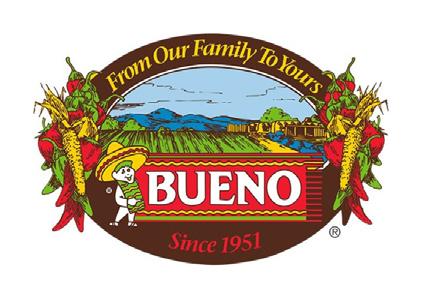





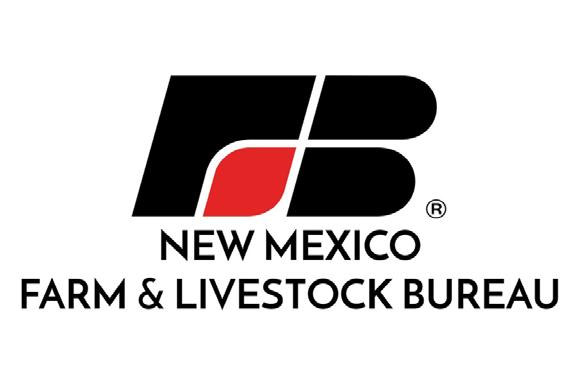









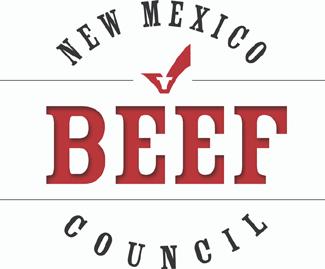







Farmer and rancher participation in Farm Bill discussions is important
 By Tiffany Rivera, Director of Government Affairs
By Tiffany Rivera, Director of Government Affairs
The Agriculture Improvement Act of 2018 aka the “Farm Bill” is set to expire on September 30, 2023. In preparation for the expiration of the current farm bill, federal committees, Congressional delegates, and trade organizations have all started to host hearings across the nation to discuss the development of the 2023 package.
Many of you are familiar with the farm bill as you participate in one or many of the programs it offers, but for those un familiar, you may be asking yourself, what exactly is the farm bill and why should I care about it? The farm bill is a federal omnibus piece of legislation that addresses food and farm policy.
The first farm bill, the Agriculture Adjustment Act (AAA) of 1933, was part of the New Deal, a comprehensive set of programs and projects aimed at restoring American prosperity. This piece of legislation was created in response to low commodity prices caused by World War II, the Great Depression, and the Dust Bowl. The main goal of the legislation was to reduce surplus production and raise crop prices. Farmers could receive payments if they agreed to reduce production on certain commodities, thus reducing the surplus and driving crop prices up. Quantity and price control would remain a core tenant of the future farm bills to come.
Since the 1933 act was established, Congress has passed 18 additional farm bills. The farm bill is updated every five years and offers Congress the opportunity to comprehensively address food and agricultural issues. The passage of addi tional farm bills has created many important programs, policies, and agencies all working to support American agriculture. For example, the Agriculture Act of 1938 created and established the Soil Conservation Service, which today is known as the Natural Resources Conservation Service (NRCS). The farm bill also created a set of farm safety net programs, which include important risk management tools like the federal crop insurance program and agricultural disaster relief programs. As the farm bill has evolved over time so have its priorities and the issues it looks to address. Under the current administra tion, there has been a strong push for increased funding and attention to climate-smart and sustainable agriculture as well as conservation. We anticipate these priorities will be heavily emphasized in the 2023 bill.
According to USDA’s Economic Research Service (ERS), the 2018 farm bill is valued at roughly $428 billion dollars. The funding for the farm bill is primarily dominated by four programmatic areas including nutrition (~75%), crop insurance (~9%), conservation (~7%), and commodity programs (~7%). The farm bill and its programs are funded through two types of funding mechanisms: mandatory funding (funding that is provided to a program at a statutory level and doesn’t require annual appropriations) and discretionary funding (funding that requires an appropriation through separate congressional action, these funds are not included in the farm bill). It will be interesting to observe discussions around future farm bill
spending as we head into next year. There is currently a mixed bag of opinions among industry and Congress as to what spending levels should look like for the 2023 package.
What exactly is in the farm bill?
The farm bill is comprised of twelve titles that address a wide variety of categories including nutrition, energy, credit, ru ral development, and more. Over the years, these titles have changed to address the needs of the industry at a specific point in time. The titles in the Agriculture Improvement Act of 2018, along with a brief description, are included below.
The commodities title houses disaster assistance programs as well as commodity support programs. The three main commodity support programs include the price loss coverage program (PLC), agriculture risk coverage program (ARC), and market assistance loan program.
The conservation title aids ag producers and landowners in adopting conservation activities on ag and forest land. Some of the main programs housed under this title include the Conservation Reserve Program (CRP), the Soil Health and Income Protection Pilot Program, the Conservation Stewardship Program (CSP), the Environmental Quality Incentives Program (EQIP), and the Regional Conservation Partnership Program (RCPP).
Title III Trade
This title looks to support U.S. agricultural trade programs as well as international food assistance programs. The major programs in this title include the Market Access Program (MAP, a program administered by the Foreign Agriculture Ser vice that provides cost share for marketing and promotional activities which help build export markets for U.S. agricultural products) and the Food for Peace Program (FFP, an international food assistance program which utilizes U.S. agricultural surplus to fight hunger and poverty).
Title IV Nutrition
The nutrition title is the largest title in the farm bill and accounts for roughly 75% of total spending. This title provides food assistance for low-income individuals through programs like the Supplemental Nutrition Assistance Program (SNAP, formerly known as food stamps) and The Emergency Food Assistance Program (TEFAP).
Title V Credit
The credit title provides financial support to producers with an emphasis on those who have limited access to traditional lending markets. Direct government loans and guarantees on private lenders’ loans are offered through this title.
The rural development title helps support and promote prosperity in rural communities nationwide. This is supported through programs aimed at improving health outcomes, broadband deployment and expansion, community and economic development planning, and rural business and community development.
This title authorizes funding for research, extension, and education including competitive grants and capacity funding at land grant institutions, state ag experiment stations, USDA research agencies, and other cooperating research institutions. This title directly supports New Mexico State University, the state’s land grand institution, through its Cooperative Exten sion Service and ag science centers.
This title supports programs administered by the United States Forest Service. This title contains programs that support and address forestry research, financial/technical assistance for nonfederal forest landowners, management of National Forest system lands, and public lands managed by the Bureau of Land Management.
The energy title encourages the development, production, and utilization of agriculture-based biofuels as a source of renewable energy. This title provides grants, and loans, and offers a feedstock procurement initiative.
This title supports specialty crops through programs and initiatives like market promotion programs, plant pest and disease prevention, and organic production.
The crop insurance title supports the federal crop insurance program, which offers subsidized policies that help farmers by protecting against losses in yield, crop revenue, or whole farm revenue. These programs are administered by the Risk Management Agency.
This title covers a multitude of items including livestock and poultry production, ag and food defense, and support for beginning farmers and ranchers. Other programs included in this title include the Feral Swine Eradication and Control Pilot Program (FSCP) and the Sheep Production and Marketing Grant Program.
Priorities for the 2023 Farm Bill
General Principals
In developing the 2023 farm bill and programs, we believe that it is imperative to abide by the following set of general prin ciples.
• Current farm bill spending levels must be protected.
• Risk management tools like crop insurance and commodity programs must remain a top funding priority.


• Promotion and development of a unified front that includes both the nutrition and agriculture programs; we must keep these components together. Agricultural production directly supports our nation’s nutrition programs and our nation’s nutrition programs directly rely on a strong agriculture sector.
• Support USDA and ensure that they have adequate staffing, capacity, and technical assistance to administer and deliver programs and services in a timely and efficient manner.
As we move closer and closer to the 2023 deadline, farm bill discussions will become more vital. If you can participate
once every five years, a lot has happened since the 2018 farm bill was crafted, and these actions have dramatically impacted our food and fiber systems. The farm bill is one of only a few pieces of legislation that touches each one of us daily, from the
October 22 at 9 a.m.
Union County Building 200 Court St. Clayton, NM
Contact: Kylie Armstrong at kylierenae24@gmail com
November 4 at 10 a.m.
Fort Sumner High School 1001 Sumner Ave. Fort Sumner, NM
Contact: Joel Ferguson at 575 937 5974
November 3 at 6 p.m. Deming High School Library 1300 Iron St. Deming, NM
Contact: Jamie Viramontes at 575 694 3600
October 7 at 8 a.m.
Eastern NM State Fair 2500 SE Main St. Roswell, NM
Contact: Rebecca Healy at 719 351 9057
October 19 at 11 a.m. Bernalillo County Extension Office 1510 Menaul Blvd. Albuquerque, NM
Contact: Matthew Harris at 575 418 8929 or Tiffany Rivera at 575 639 2476

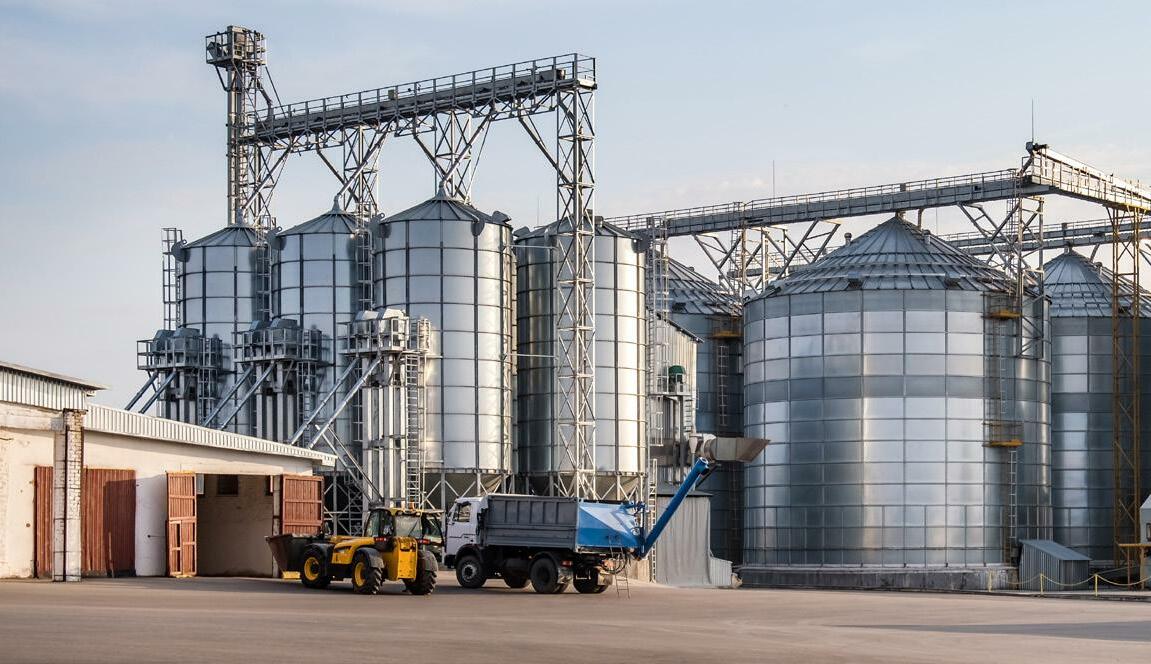



2220 N. Telshor
Las Cruces, NM 88011
PERMIT 1152 Albuquerque, NM
NMF&LB

Since 1917 . . . a Leader in New Mexico

2220 N. TELSHOR BLVD. LAS CRUCES, NM 88011 575.532.4700 • FAX: 575.532.4710
2220 N. TELSHOR BLVD. LAS CRUCES, NM 88011 575.532.4700 • FAX: 575.532.4710
Craig Ogden President, Loving
Craig Ogden President, Loving
Larry Reagan
Larry Reagan
1st Vice President, Ft. Sumner
1st Vice President, Ft. Sumner
Boe Lopez 2nd Vice President, Springer
Boe Lopez
2nd Vice President, Springer
Chad Smith Chief Executive Officer
Elizabeth Foster Chief Executive Officer
Burl Brown, Des Moines
Bud Deerman, La Mesa
Crystal Diamond, Elephant Butte Jim Ellett, Hope Duane Frost, Claunch Travis Harris, San Antonio Don Hartman, Deming Gary Hathorn, Flora Vista Leon Hemann, McDonald John Jackson, Lake Arthur Deena Kinman, Elida Donald Martinez, El Rito Steve Myrick, Clovis Tommy Ortiz, Las Vegas Stewart Rooks, Gila Troy Sauble, Maxwell Mario Trujillo, Questa Tom Wilton, Ft. Sumner
Bud Deerman, La Mesa Crystal Diamond, Elephant Butte Jim Ellett, Hope Duane Frost, Claunch Travis Harris, San Antonio Don Hartman, Deming Gary Hathorn, Flora Vista Leon Hemann, McDonald John Jackson, Lake Arthur Deena Kinman, Elida Donald Martinez, El Rito Kim Miller, Grenville Steve Myrick, Clovis Tommy Ortiz, Las Vegas Stewart Rooks, Gila Troy Sauble, Maxwell Mario Trujillo, Questa Tom Wilton, Ft. Sumner
Anita Hand, Chair
Women’s Leadership Committee Andy Ellett, Chair Young Farmers & Ranchers Committee
Connie Rooks, Chair Women’s Leadership Committee Russell Johnson, Chair Young Farmers & Ranchers Committee
REGIONAL DIRECTORS
Benjie Segovia Regional Director
Benjie Segovia Katelin Spradley
Valerie Huerta Director of Organization
Katelin Spradley Director of Communications Tiffany Rivera
Director of Governmental Affairs
Tiffany Rivera Director of Governmental Affairs
Traci Curry Director, Ag in the Classroom
Traci Curry Director, Ag in the Classroom
Britney Lardner Coordinator, Ag in the Classroom
Britney Lardner Coordinator, Ag in the Classroom
Francisco Hatay Membership and Marketing Manager
Francisco Hatay Membership and Marketing Manager
Cecilia Diaz-Johnson Bookkeeper
Dalene Hodnett Director of Communications and Media Relations
Theresa Widner Executive Administrative Assistant
Cecilia Diaz-Johnson Bookkeeper
Theresa Widner Executive Administrative Assistant